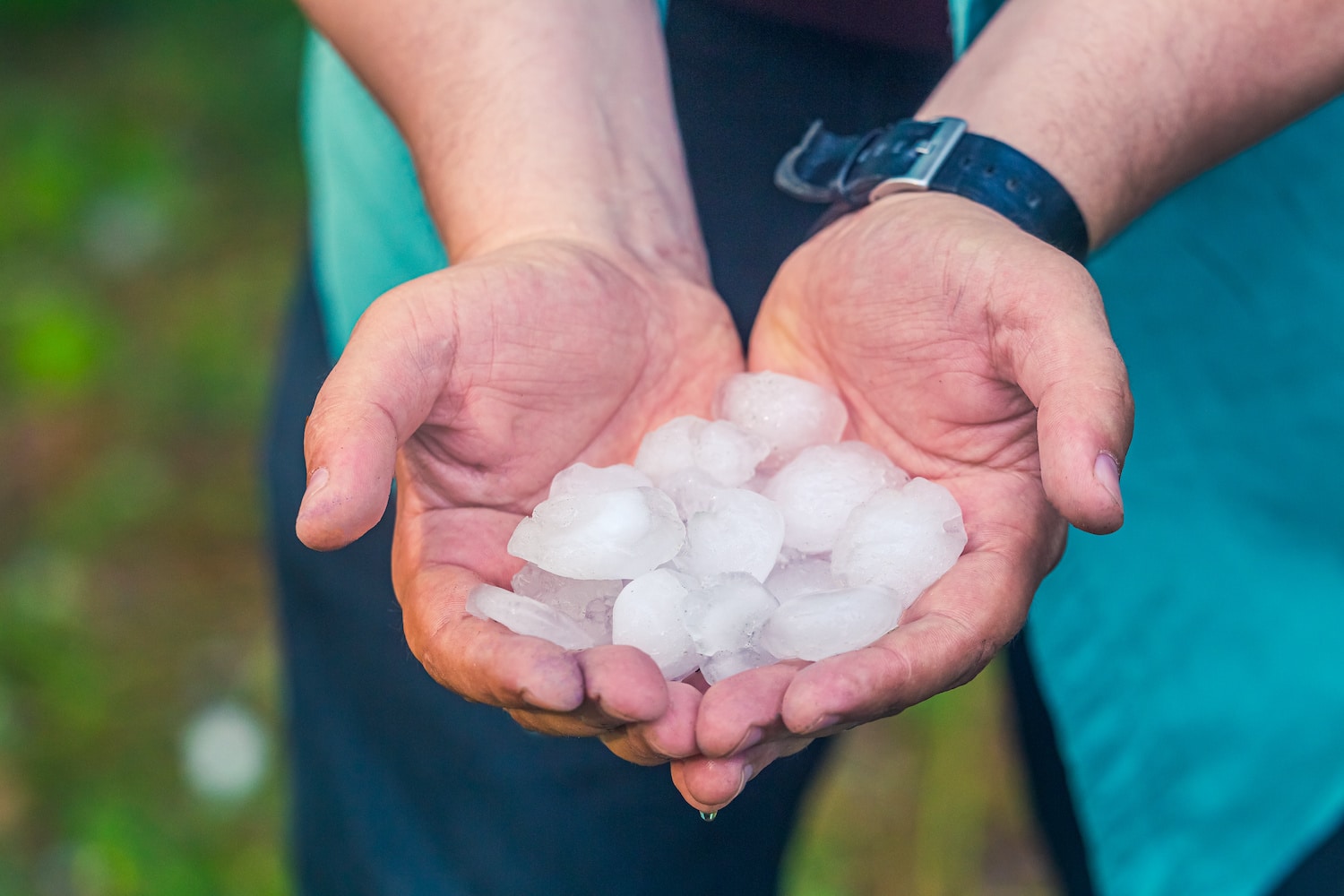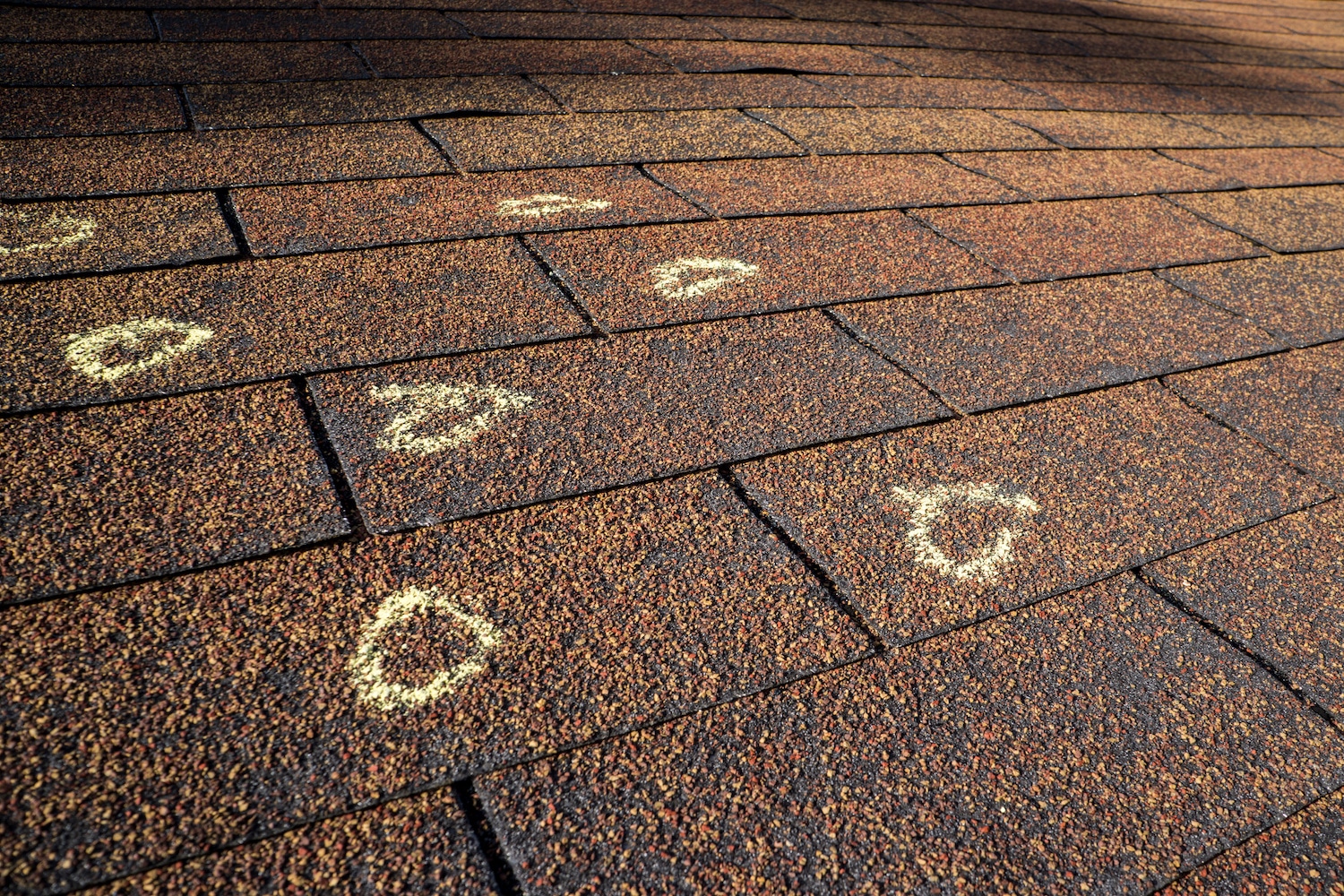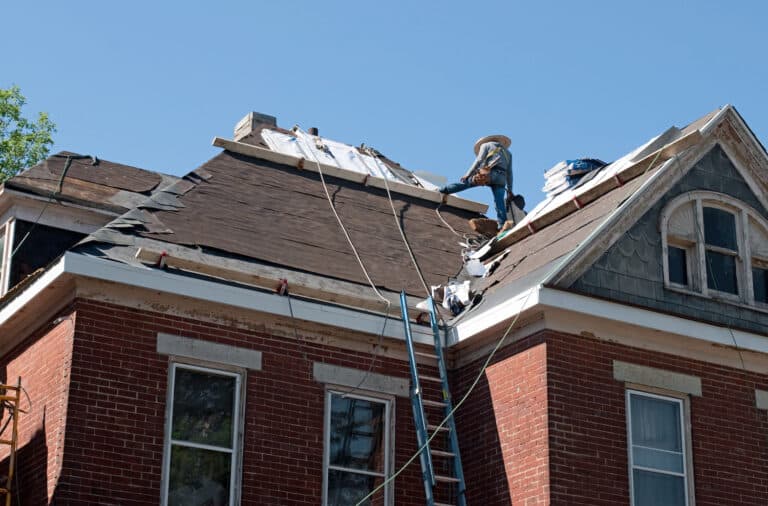Hail Damage: What Qualifies You For A New Roof (2022 Update)
Hail storms don’t have the same notoriety as tornados and hurricanes. Comparatively, the property damage caused by a hail storm doesn’t hurt as many people and isn’t as widespread. However, the damage left behind can still be extensive and expensive.
Your roof, in particular, may take significant hail damage after a storm. Your insurance company will determine if you qualify for a new roof or not and how much they’re willing to pay for repairs or replacement for your storm-damaged roof.
Hail Storms and the Damage They Cause
Hail is a frustrating weather phenomenon. It can be challenging to predict when hail will occur and how much damage you’ll get.
What Weather Conditions Create Hail?
Hail is a by-product of thunderstorms. Thunderstorms occur when there is warm, humid air near the ground and dry, cool air above it. This collision of air masses happens when a cold front or low-pressure system moves in. As a result, the warm, unstable air rises, building storm clouds.
Inside the storm clouds are upward winds, called updrafts, and downward winds, called downdrafts. Hail forms when rain gets caught in these high winds. Rain gets swept into the cold upper levels of the atmosphere and freezes.
When this ice meets more raindrops, the hailstone grows larger. Finally, the hailstone falls when it is too heavy for the strong winds.

How Does Hail Cause Damage?
The main factor determining how much hail damage will occur is the size of the hail. Large hail forms from several layers of ice built one on top of the other. Larger hail is often harder hail as well.
Most hail won’t cause damage until it’s at least an inch in diameter—about the size of a quarter. However, you’re almost guaranteed to sustain damage if hail is larger than an inch and a half. And that damage will be substantial the bigger the hailstone is, such as golf-ball sized. Wind speeds and the intensity and angle at which hail hits your roof will also impact how much damage your roof sustains.
Another major factor determining how damaged your roof will be is the type of roof you have. Hail damages some roofing products more easily than others.
The age of your roof and previous wear and tear to your roof are other factors that may cause more significant damage.
What Type of Damage Can a Hail Storm Cause?
The biggest issue that hail can cause to your roof is damaging the roofing material. The type of storm damage depends on what type of material your roof is. Broken roof shingles or dented metal can let water in, leading to roof leaks and further damage.
Asphalt Shingles
Asphalt shingles don’t need the hail to be huge to cause damage. Anything over an inch can destroy the integrity of the roof. Hail damage can include broken or bruised edges, bruising, or punctures.
Wood Shingles and Shakes
Wood shingles and shakes will start to take damage when the hail is over an inch and a quarter. Hail damage can range from impact marks to splitting the shingle.
Tile Roofs
Whether clay, fiber-cement, or concrete, tile roofs often hold firm until the hail reaches about an inch and a half. Clay and concrete tiles will often fracture or break, while fiber-cement tiles can break or have dents.
Metal Roofs
The hailstone size required to damage a metal roof depends on the type of metal. Steel panels are usually fine up to two-inch hailstones, while aluminum starts to take damage at one-inch hail.
Hail can cause dents in metal roofing, but that’s not usually enough to disrupt the roof’s integrity. The most significant issues are when the hail ruptures the metal or causes gaps in the roofing by disengaging a lap element or fastener.

Hail Roof Damage
After a hailstorm, it’s essential to determine how much damage your roof has sustained. The best way to do this is to get a quote from a roofing contractor before you file your insurance claim. Often, they’ll give you a free roof inspection.
How Much Hail Damage Qualifies You for a New Roof Through Your Insurance Company?
Unfortunately, what qualifies you for a new roof will largely depend on your homeowners’ insurance company and policy. Of course, if your home sustained severe damage and is suddenly missing half its shingles, you’ll probably qualify for a replacement. But most of the time, it’s not that easy.
Often, companies will determine if a new roof is necessary by using test squares during the professional roof inspection. They’ll choose a roofing section on each side of the home and determine how many hits are within those squares. After a certain number, they’ll decide if a replacement is necessary.
Insurance companies and roofing contractors may consider other factors when determining if a new roof is necessary. The roof’s age or quality outside of the hail damage may make it more likely that you’ll qualify for a complete roof replacement. Once you have the professional inspection, you can file your roof insurance claim. Your insurance agent should be able to help you with any additional steps along the way.
What Roof Damage Can You Fix?
If your roof is new or if your policy isn’t willing to pay out the cost of a whole new roof, you may want to look at making roof repairs instead of replacing the entire roof. If only a small area of your roof was hit by hail, replacing those shingles is much easier than doing the whole roof, just like replacing a roof vent or repairing a roof leak. Often, repair costs are less than replacement costs.
What To Expect from a Roofing Contractor Inspection
Before you can get a payout for your hail-damaged roof from your insurance provider, they’ll want your roof inspected by a third party that the insurance company sends. This could be an experienced roofing contractor, roofing expert, or insurance adjuster.
Typically, the inspector will climb up onto the roof and look for signs of hail damage, like:
- The roof structure and rotted or damaged framing and sagging ceilings
- Damage to the roofing materials
- Water damage, wood rot, mold, and holes in the interior of the roof
After you’ve had your roof inspected, the trained professional will give you an estimate of the hail damage repair costs and replacement costs. You can file your insurance claims and determine what your homeowners’ insurance will pay for the hail damage with that information. If you’re unhappy with that number, you can hire an insurance adjuster to mediate.
Conclusion
Hail storms can cause roof damage, but the amount and type of damage will depend on the size of the hail and the roofing material, age, and condition of your roof. Damage often consists of broken or dented shingles or tiles. Whether or not you qualify for a new roof depends mainly on your insurance company and homeowners’ insurance policy.





